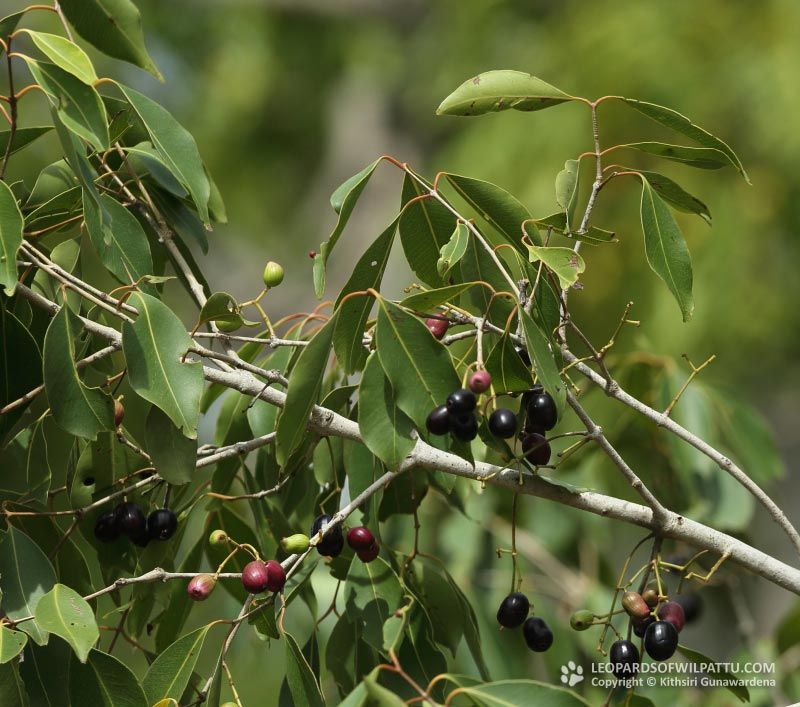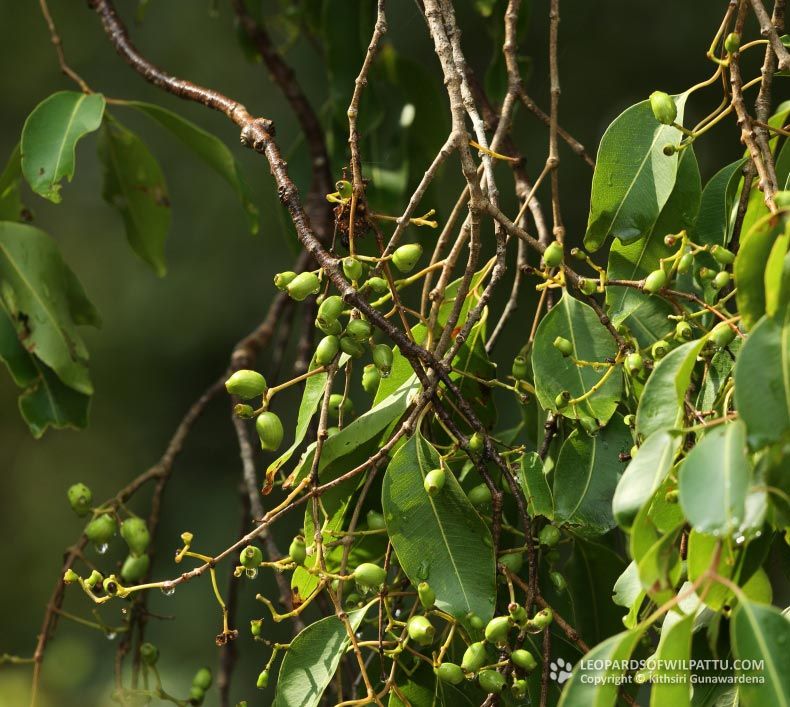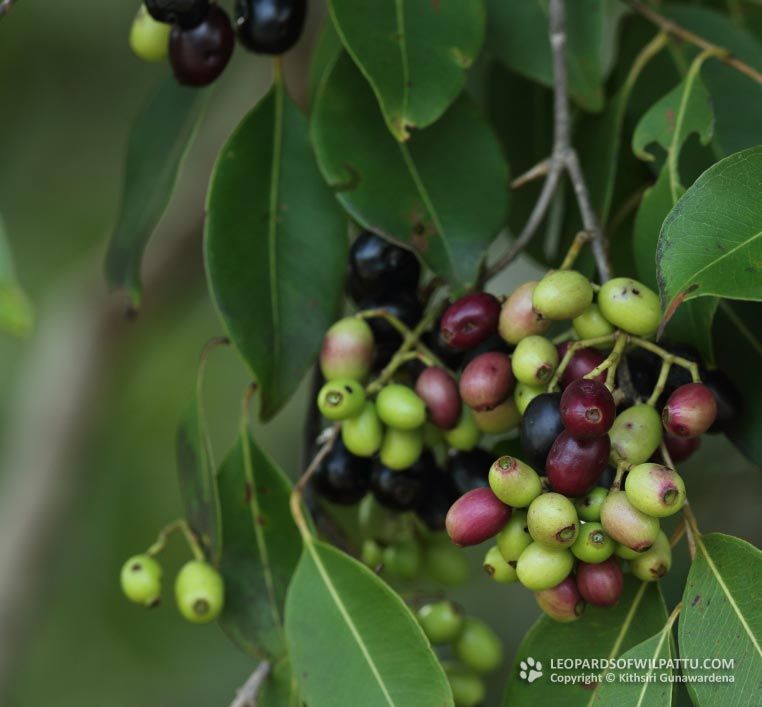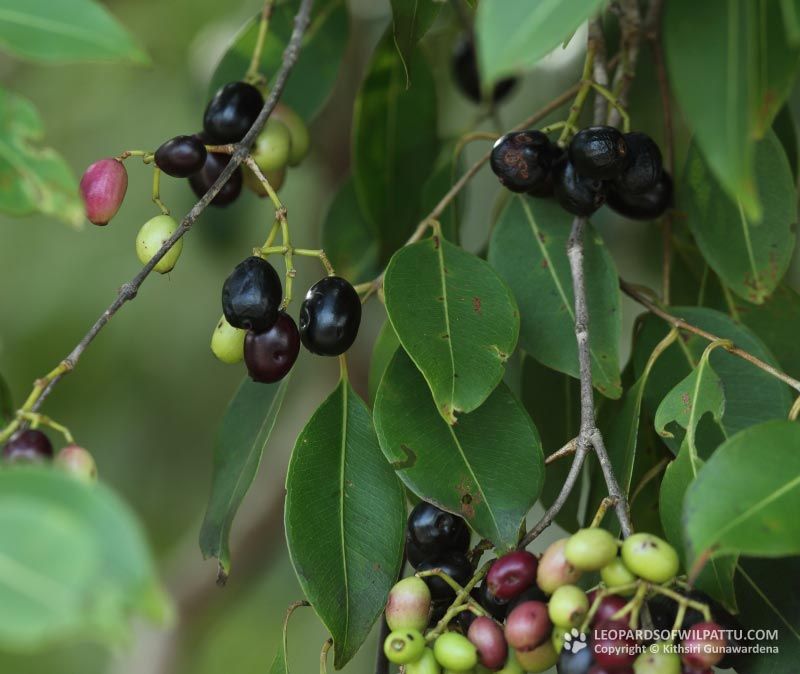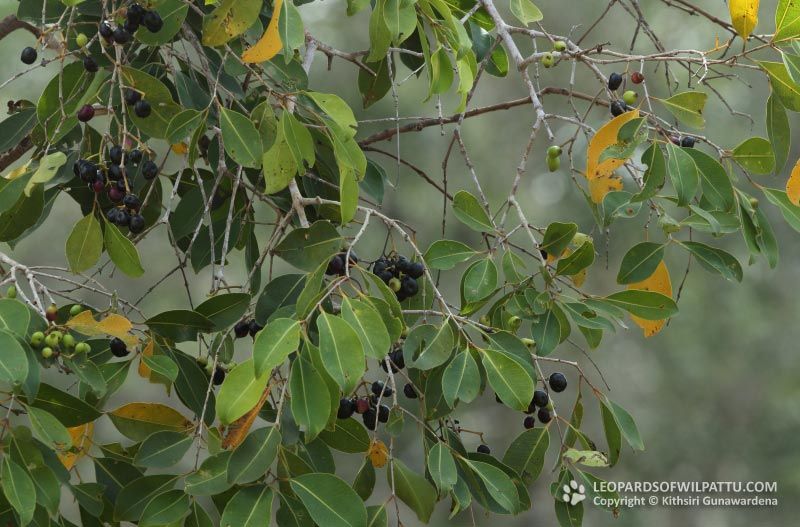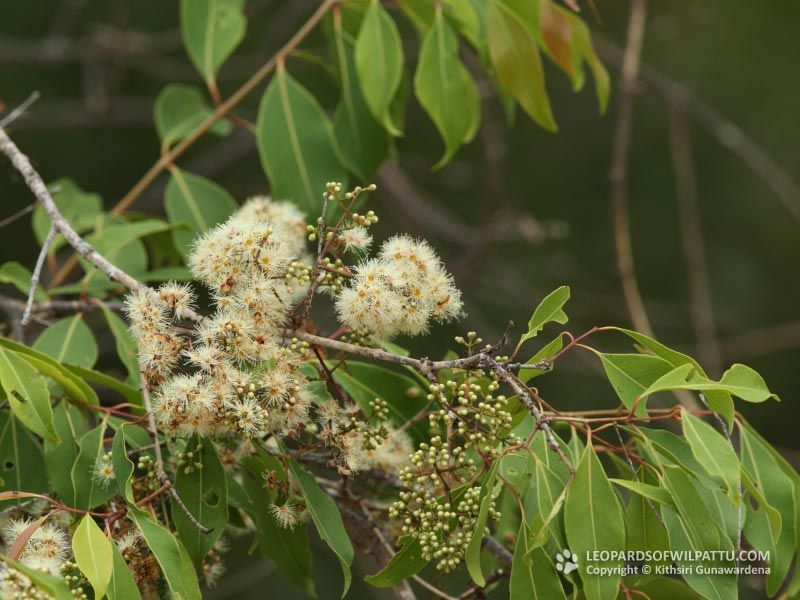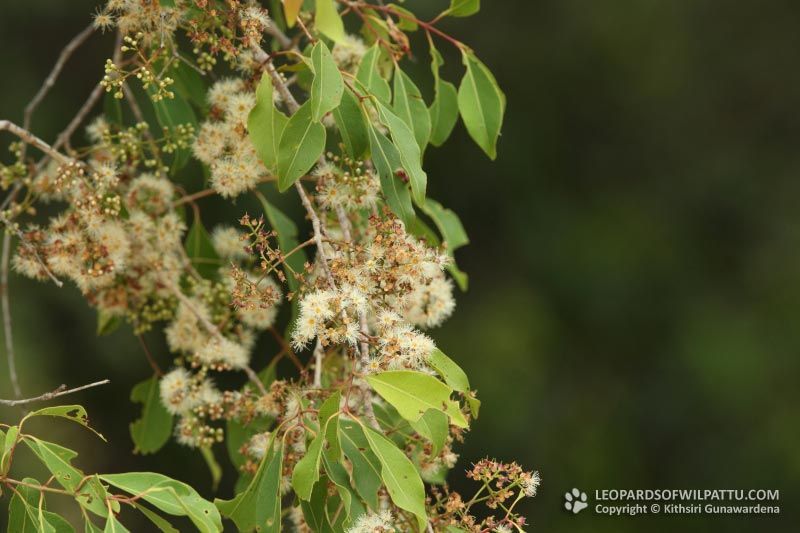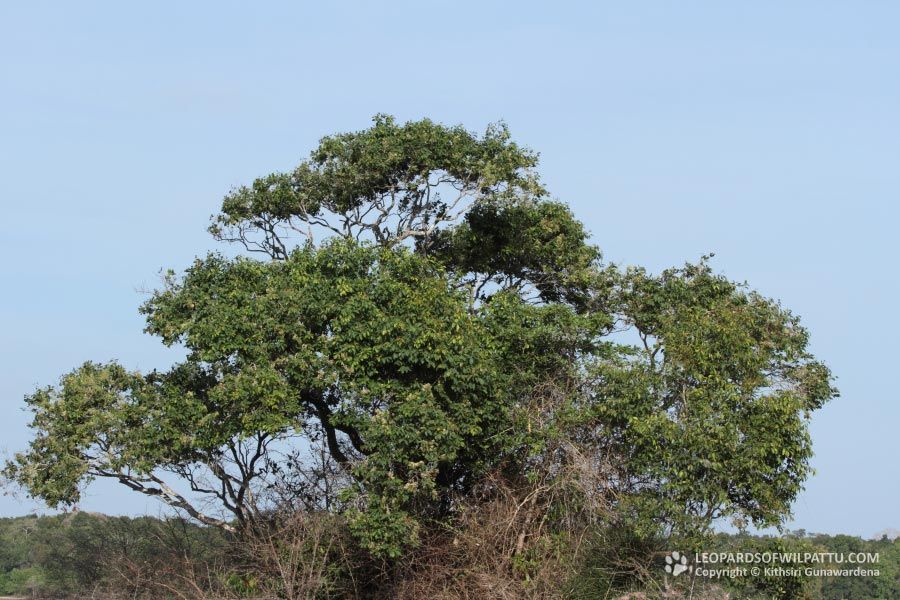
Trees & Shrubs ‹‹ Go Back
This is an indigenous evergreen tropical tree that grows to about 30 meters in height and is known to live for about 100 years. It is also native to Bangladesh, India, Nepal, Pakistan, the Philippines and Indonesia.
It has also been introduced to Florida in USA, Surinam, Trinidad and Tobago. During the Portuguese colonization this species has been introduced to Brazil where it has now become naturalized.
The conservation status of this species is regarded as Least Concerned (National Red list 2012)
This species is very common in forested areas of dry coastal areas and dry lowlands. It is a common tree in most dry zone national parks. There are a number of Madan trees on the roadsides in the city of Colombo as well.
The fruits and seeds of this species are used in Ayurveda medicine to lower blood sugar and as a treatment for diabetes. Consuming the seeds of this fruit together with okra is said to intensify the blood-sugar-lowering action.
Two beautiful species of butterflies known as the Large Oak Blue and Centaurs Oak Blue lay their eggs on the tender leaves of this species.
This is a very common fruiting tree that is found throughout Wilpattu National Park. This species is very common around most villus and along the roads within the parks. By July most trees will bear flowers and most trees become laden with ripe berries by September and October. During these months they provide a season of plenty for all the fruit-eating animals in the park. I have observed many species of birds gorging themselves on these berries. I have often watched Sloth Bears under these trees feeding on the berries fallen on the ground. On a few occasions I have also watched Bears climbing these trees to feed on the fruits. I have also seen Spotted Deer, Grey Langur and Giant Squirrel also feed on these sweet berries.

